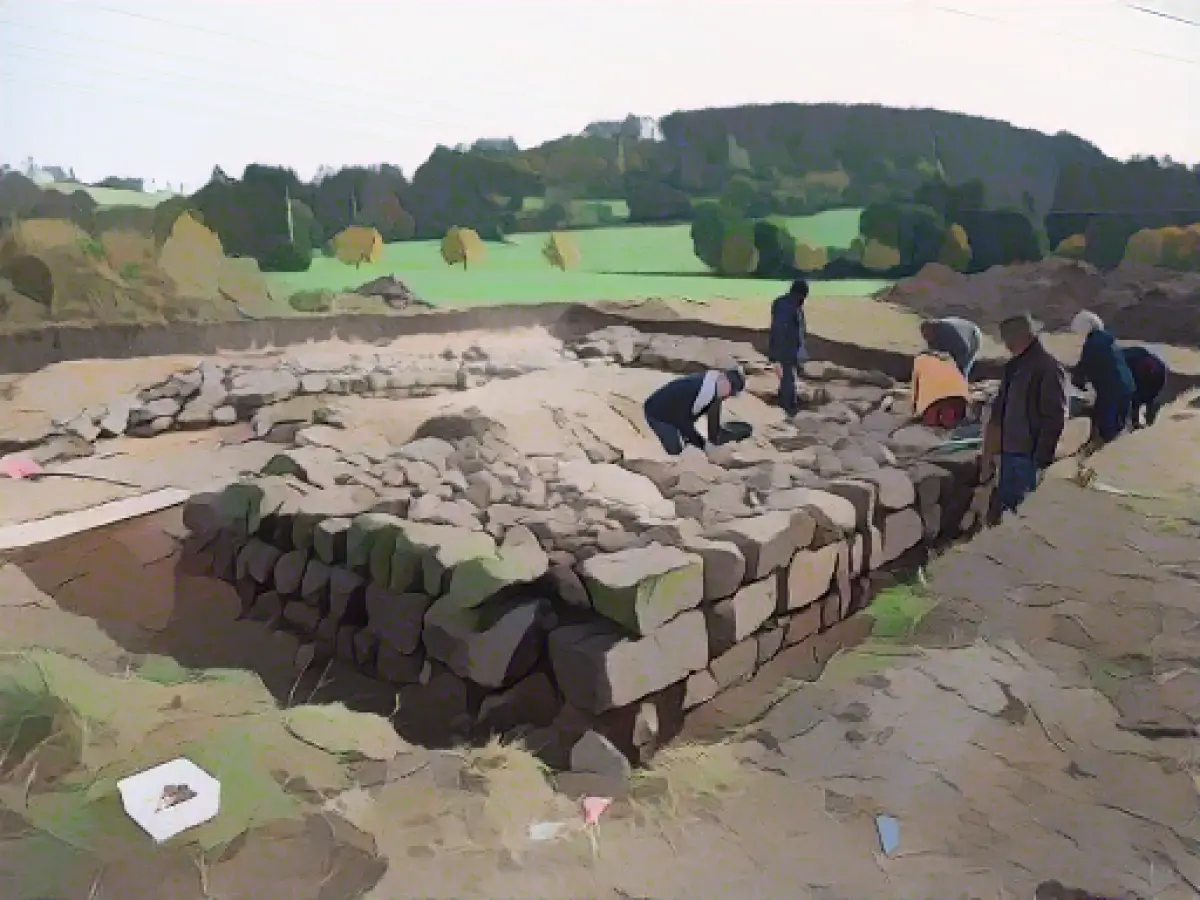Volunteers for Kronach archaeology project
Re-exploring the history of your own town - this is currently possible in Kronach: in the fall, volunteers dug under the guidance of an archaeologist, and another project is planned for next year. The results will provide exciting questions about the history of the town and the region.
The starting point is two towers from the Salian period and ceramics from the early Middle Ages. "The excavations near Friesen are classified as one of the most important research objects in Upper Franconia," said Mayor Angela Hofmann. "The uniqueness of the oldest pottery finds in the district of Kronach and the Salian castle raise interesting questions about the earliest history of Kronach."
Ceramics from the 8th century
In 1989, Gregor Förtsch discovered ceramics from the eighth to tenth centuries near the Kronach district of Friesen. Initially, it had to be ruled out that the ceramics had arrived there by chance - by replacing the soil, for example. "I really wanted to get to the bottom of this find," said Förtsch, head of the Kronach Archaeological Working Group. They financed the first excavation themselves and initially came across a paved dirt track.
And then they finally discovered the foundations of two stone buildings, each with a square floor plan of 10 by 9 meters and a wall thickness of 2.40 meters. It was a Salian castle with a palace and a defensive tower. According to Förtsch, this was probably no ordinary building, "it was something better, reserved for the imperial nobility or bishops".
Symposium planned for 2024
The Salian period goes back to the East Franconian Salian dynasty, which produced kings and emperors from 1024 to 1125. Their ancestral territories were located on the Rhine. So how did the Salian architectural style come to an area that was remote at the time and far from the Rhine? This is one of the many questions raised by the archaeological finds near Kronach. A specialist conference next year will provide deeper insights into the evaluation of the finds and the extent of the settlement.
According to the State Office for the Preservation of Historical Monuments, it is rare for volunteers to be involved in archaeological projects in Bavaria. "The majority of archaeological investigations in Bavaria are rescue excavations in the course of construction work and are carried out by professional excavation companies," a spokesperson said. Nevertheless, there are still occasional educational or voluntary excavations, but these are always under professional archaeological supervision.
Voluntary commitment to the preservation of archaeological monuments has a long tradition in Bavaria. "Private individuals, local heritage officers, working groups and associations make an important voluntary contribution to the recording, preservation and communication of the state's archaeological heritage." In the specific case of Kronach, the local authority, volunteers and the State Office for the Preservation of Historical Monuments worked in close cooperation, all those involved assured.
And what are the concrete plans for the foundations of the two Salier towers in Kronach? The excavation was for documentation purposes and the foundations have since been professionally covered over again. Förtsch would like to provide detailed information at the site of the finds, for example with plaques: "This is our history, it's interesting and important," he said. "And it still puzzles us."
- The involvement of municipalities in archaeological projects, such as the one in Kronach, can help shed light on the history of the region, encouraging further research and raising questions about the past.
- The cooperation between local authorities, volunteers, and archaeological institutions, as seen in Kronach's project, is crucial in preserving and communicating the country's ancient history to the public.
Source: www.dpa.com








